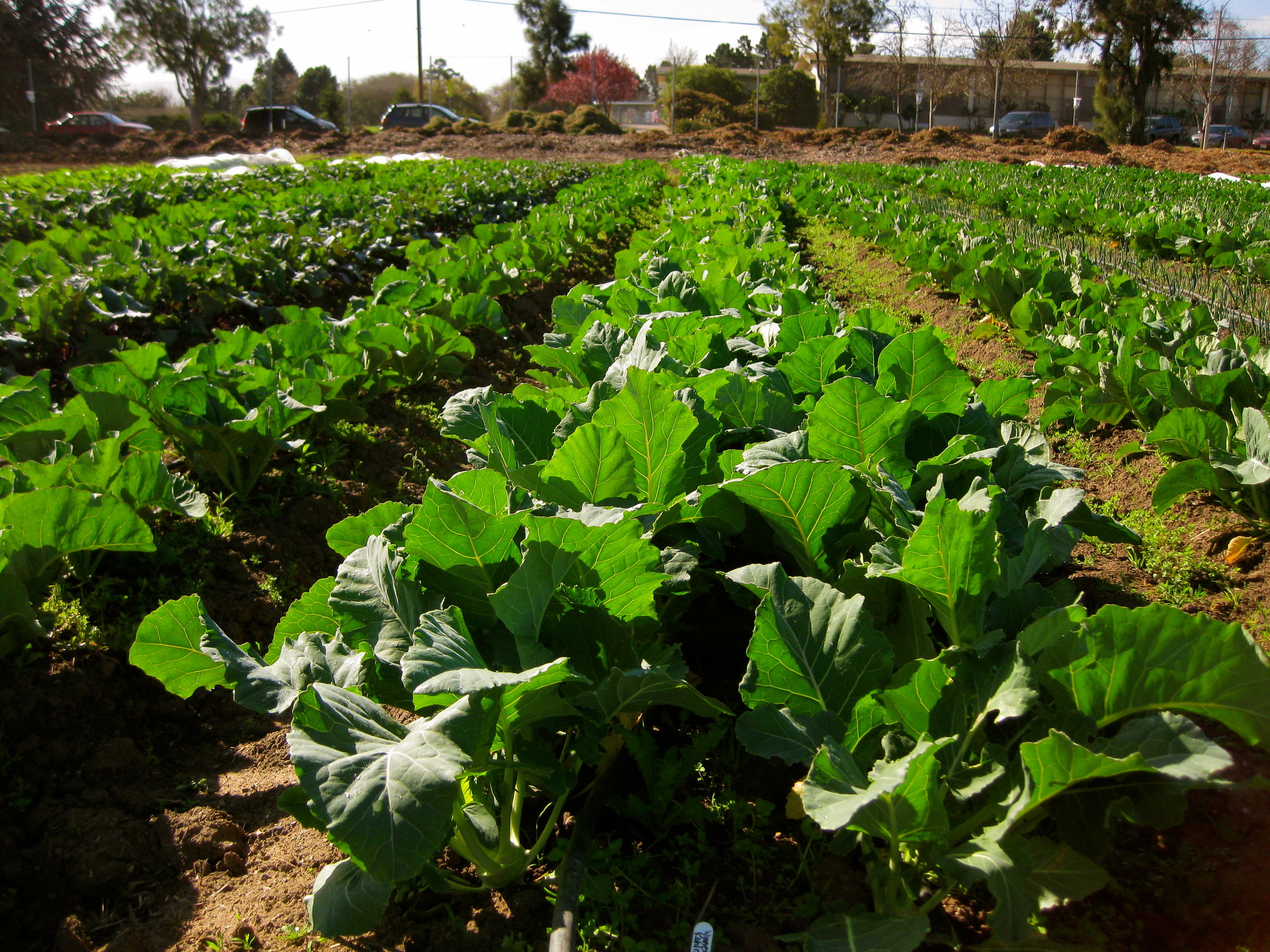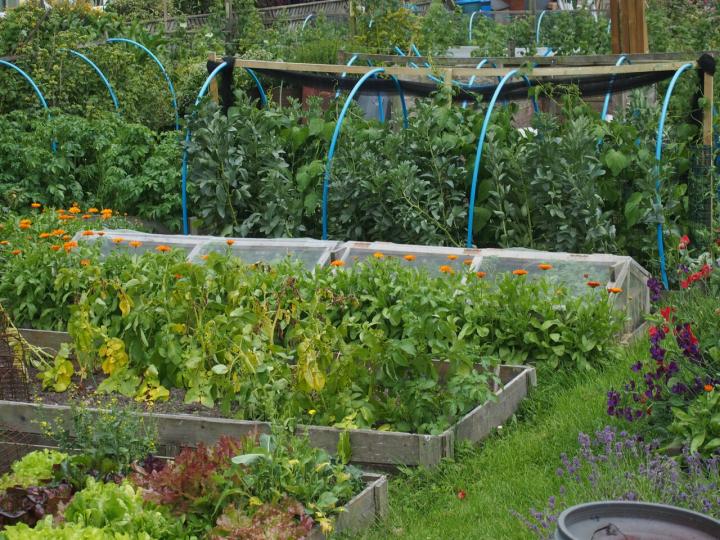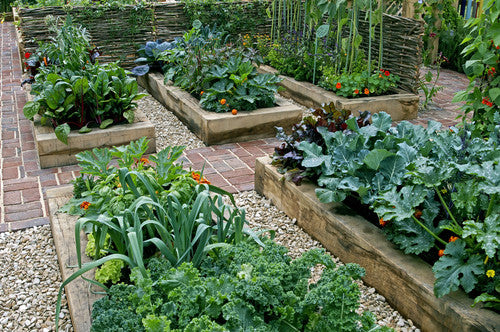Secrets to a Successful Homestead Gardening Effort
Secrets to a Successful Homestead Gardening Effort
Blog Article
Learn Exactly How to Cultivate a Thriving Horticulture Setting for All Skill Levels
Developing a prospering garden is a multifaceted endeavor that can be welcomed by individuals at any ability degree. By analyzing key parts such as dirt health, appropriate plant option, and seasonal care routines, one can create a sustainable gardening technique that produces satisfying outcomes. Understanding just how to examine and enhance your yard space lays the structure for success. The intricacies of applying these concepts typically present difficulties that can deter also the most passionate beginner. What approaches can be utilized to get over these challenges and cultivate a really growing environment?
Understanding Your Garden Area
In the world of horticulture, understanding your garden area is vital to growing a thriving landscape (Homestead Gardening). The very first step in this undertaking entails assessing the particular attributes of your story. Variables such as soil composition, sunlight exposure, and drainage play vital duties in establishing the viability of your yard for numerous kinds of plants
Begin by conducting a dirt test to analyze pH levels and nutrient content, which will inform any necessary amendments. Additionally, observe how much sunlight your room obtains throughout the day. Various plants have differing light needs; some grow completely sunlight, while others like full or partial shade.

Finally, review the readily available room and strategy appropriately. This includes considering plant elevations and spread out to guarantee sufficient room for development without congestion. By acquiring a comprehensive understanding of your yard area, you set the foundation for an effective gardening experience.
Selecting the Right Plant Kingdoms
Selecting the right plants for your garden calls for cautious consideration of numerous aspects, consisting of environment, dirt conditions, and individual preferences. Begin by examining your local environment, as certain plants flourish particularly temperature level ranges and climate patterns. For example, exotic plants might not survive in chillier regions, while sturdy perennials can endure rough wintertimes.

Consider your individual preferences, consisting of visual appeal and upkeep degrees. Choose whether you like vibrant flowers, lavish foliage, or edible crops. In addition, factor in the time and initiative you are willing to buy plant treatment, as some selections demand more interest than others.
Last but not least, consider the yard's layout and light exposure. Sunlight patterns throughout the day will certainly affect your selections-- some plants require full sunlight, while others grow in color. By attentively evaluating these components, you can create a harmonious and efficient yard customized to your environment and tastes.
Vital Gardening Tools
A fully equipped gardener can substantially improve their horticulture experience and try this web-site results. Vital horticulture tools are fundamental to cultivating a successful yard, no matter of ability level. First, a durable spade is very useful for digging and transforming soil, while a trowel permits precise growing and transplanting of smaller plants.
Pruning shears are vital for maintaining plant wellness by eliminating overgrown or dead branches, advertising much better air circulation and development. Furthermore, a hand rake serves for clearing particles and aerating the soil, making certain ideal conditions for plant origins.
Gardening gloves shield hands from sores, thorns, and chemicals, making them an essential device. A watering can or hose pipe with a flexible nozzle makes sure that plants receive ample wetness without overwatering.
Lastly, think about investing in a tough wheelbarrow for carrying dirt, plants, and tools around the yard efficiently. By constructing a high quality toolkit that consists of these vital products, garden enthusiasts can tackle numerous tasks with confidence and convenience, leading the way for a thriving gardening setting. Remember, the here are the findings right devices not just improve effectiveness yet also improve the total enjoyment of the horticulture procedure.
Soil Preparation and Upkeep
Quality dirt is the structure of an effective yard, making proper preparation and maintenance important for healthy and balanced plant development. Based on the examination results, amendments can be made to optimize soil conditions for particular plant demands.
Integrating organic matter, such as compost or well-rotted manure, is vital for enhancing soil structure and fertility. This not only enhances nutrient availability but also promotes beneficial microbial activity. In addition, correct water drainage is essential; hefty clay dirts may need the addition of sand or perlite to improve oygenation.
Normal upkeep of soil health includes mulching, which conserves dampness and subdues weeds. In addition, turning crops yearly helps protect against nutrient deficiency and minimizes bug and illness risks. It is additionally crucial to avoid over-tilling, which can interfere with dirt structure and injury helpful microorganisms.
Ultimately, a consistent dedication to soil prep work and maintenance will certainly cause a growing yard, making sure that plants receive the essential nutrients they require for robust development and efficiency.
Seasonal Care and Monitoring

In spring, emphasis on growing new seeds and plants, while also carrying out soil tests to change nutrient shortages. Frequently look for diseases and bugs, as these can proliferate with the warming weather condition. Summer season demands constant watering and mulching to preserve moisture, together with trimming for better air flow.
As fall approaches, it's time to prepare the garden for inactivity. This consists of harvesting crops, tidying up particles, and using a layer of mulch to protect plant roots my link from frost. Think about growing cover plants to enrich the soil during the wintertime months.
Last but not least, winter season care is critical. Inspect structures like greenhouses for damage and guarantee appropriate insulation for delicate plants. Regularly keep track of for insects that may look for sanctuary inside. By adjusting your horticulture techniques to the seasonal cycles, you can cultivate a flourishing environment that supports plant health year-round.
Verdict
In verdict, growing an effective yard needs a detailed understanding of necessary concepts such as soil composition, sunlight direct exposure, and ideal plant option. Applying efficient soil preparation and maintenance strategies, in addition to using the right tools, fosters an optimum growing environment. Regular seasonal treatment and administration practices further boost plant wellness and efficiency. By adhering to these foundational standards, individuals at all ability degrees can achieve a flourishing yard that adds to both aesthetic satisfaction and environmental sustainability.
Picking the right plants for your garden calls for careful factor to consider of various variables, including climate, soil problems, and personal choices. Conduct a soil examination to identify pH degrees and nutrient web content, which will assist you in picking plants that will prosper in your garden.Finally, consider investing in a tough wheelbarrow for carrying dirt, plants, and tools around the garden successfully.Quality soil is the foundation of an effective yard, making proper prep work and upkeep essential for healthy and balanced plant development. Homestead Gardening.In conclusion, growing an effective garden needs a detailed understanding of necessary concepts such as soil composition, sunlight exposure, and ideal plant choice
Report this page